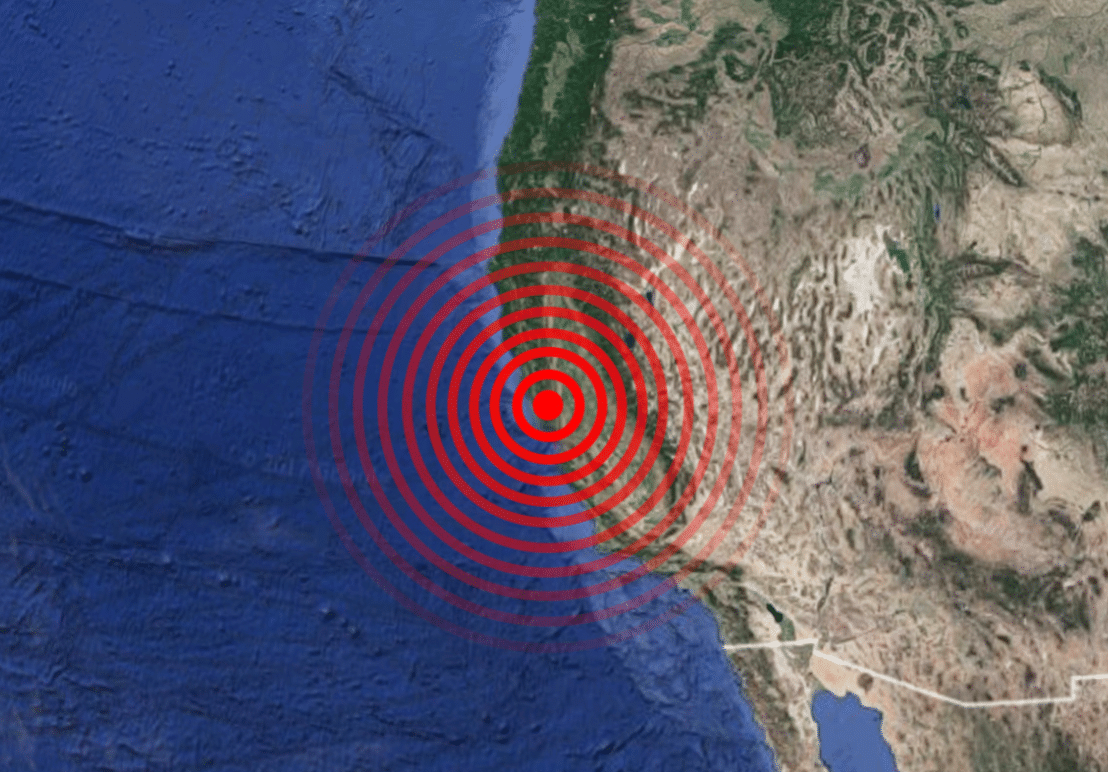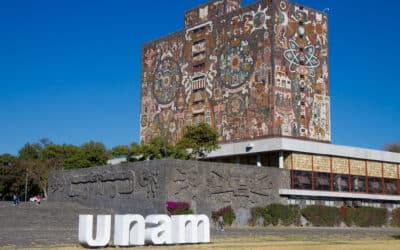» Download this briefing [pdf]
Location: Moss Landing, California, USA (Between Monterey and Santa Cruz)
Budget: $16.3 million
Summary:
The Marine Cloud Brightening Project (MCBP) aims to test the premise that spraying a fine mist of sea water into clouds can make them whiter, reflecting more sunlight back into space. The MCBP, a form of Solar Radiation Management (SRM) began with indoor development and testing of spray nozzles, and is moving toward a land-based field test in 2018, followed by ship-based tests and a larger-scale sea test later on.
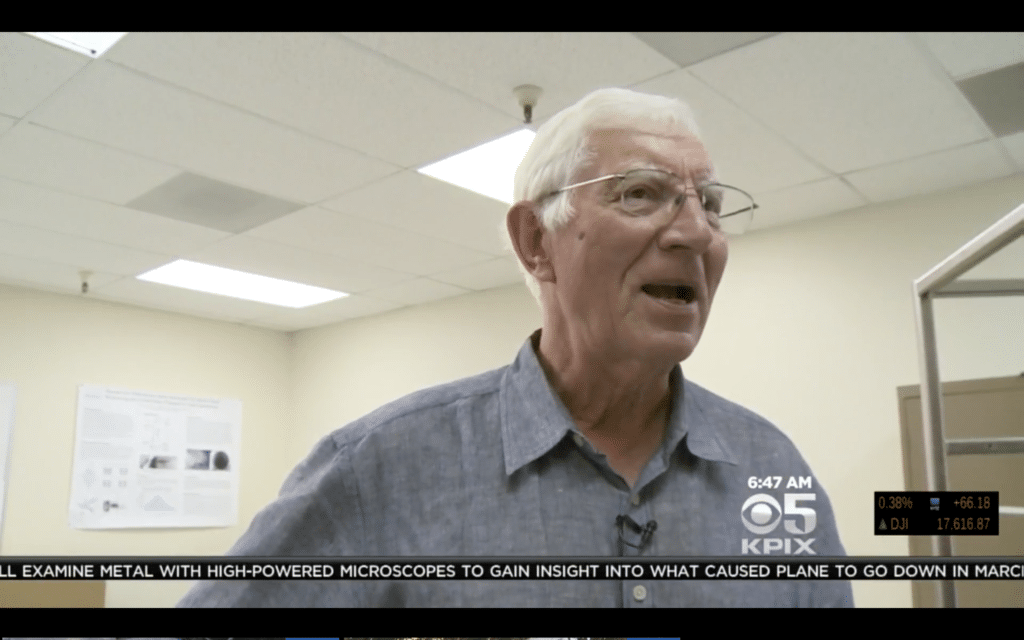
Armand Neukermans discusses his plans with a Bay Area TV station.
After previous attempts to test “cloud brightening” as a geoengineering technique (e.g. the Silver Lining project) were cancelled after a public outcry, the project’s leaders have taken a smaller-scale, more public relations savvy approach.
Funding:
Initial support for development of hardware came from the Bill Gates-backed Fund for Innovative Climate and Energy Research (FICER). It is unclear where the funding for the project’s planned field tests is coming from.
Key dates:
Field tests were initially slated for as early as 2016, but have been delayed for lack of funding. The first land-based experimental use of cloud brightening hardware is now expected to take place in August 2018. The project hopes to move to ship-based tests within 2 years and then a large cloud brightening experiment 2-3 years after that.
Key players in MCBP:
Thomas Ackerman
Professor in Atmospheric Sciences, University of Washington
Robert Wood
Professor of Atmospheric Sciences, University of Washington
Philip J. Rasch
Pacific Northwest National Laboratory (PNNL)
Armand Neukermans
Former engineer at Xerox Labs, HP
Kelly Wanser
CEO of Luminus Networks
Stephen Salter
Emeritus Professor of Engineering Design, University of Edinburgh
John Latham
Professor emeritus at the University of Manchester (UK)
Regulatory status:
The UN Convention on Biodiversity has passed a moratorium on geoengineering deployment and experimentation (2010) that covers SRM, including experiments like this one. However, the US is not a party to the CBD. The US is a party to the London Convention and Protocol (on marine pollution) that has declared itself competent to rule on “marine geoengineering.” While spraying from land is not “marine.” future ship-based steps do clearly fall under the London Convention.
The US is also a party to the UN Environmental Modification Convention (ENMOD) prohibits hostile use of environmental modification technology globally. Marine tests are also governed by the provisions of the UN Convention on the Law of the Sea (UNCLOS) and as tests move offshore, the current negotiations over activities affecting Biodiversity Beyond National Jurisdiction (BBNJ) become highly relevant.
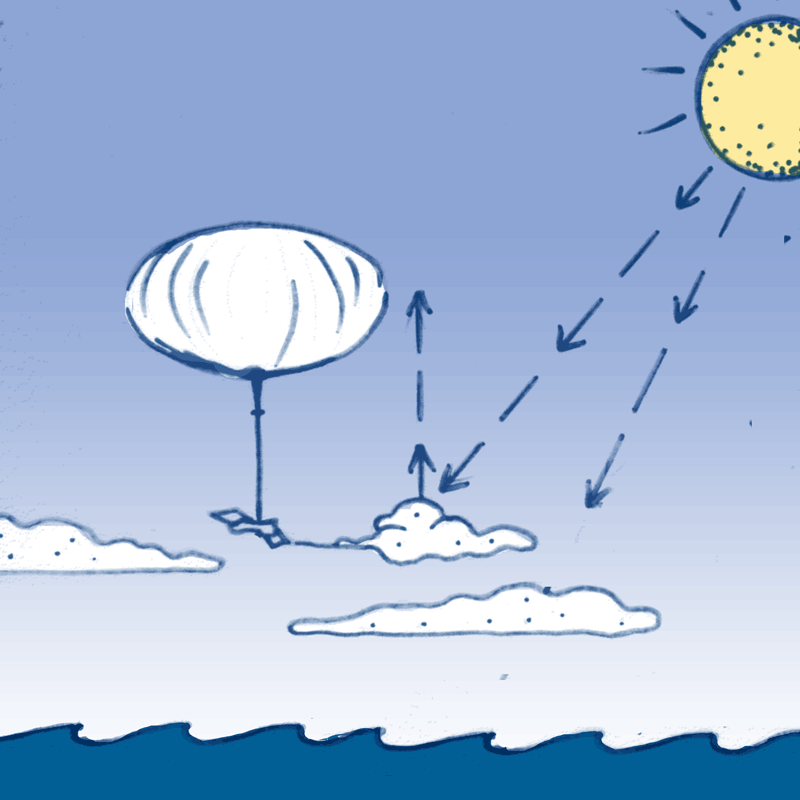
Cloud brightening is on of an array of geoengineering techniques that aim to reflect sunlight back into space on a mass scale.
Under US Federal law (National Weather Modification Policy Act of 1976), any modification of the weather is required to be reported to the National Oceanic and Atmospheric Administration, and the results of research must be made public.
The proposed tests are taking place on Popeloutchom, the traditional territory of the Amah Mutsun Tribe, an Indigenous group dedicated to protecting its terestrial and aquatic ecosystems. Future large-scale marine cloud brightening trials could potentially affect the weather and airspace of several Indigenous communities in California’s central coast region.
For Indigenous Nations, territorial sovereignty spans land, underground and airspace as a whole. When it comes to legal precedent, one California-based lawyer has made a persuasive case that tribal governments’ sovereignty extends to the airspace over their lands under US law as well.
Possible impacts:
The effects of large-scale testing of MCB geoengineering techniques are unknown, but could affect rainfall in the immediate area, as well as creating unpredictable changes to regional weather patterns at a distance. For example, marine cloud brightening in the Pacific and elsewhere may lead to reduced rainfall in the Amazon basin.
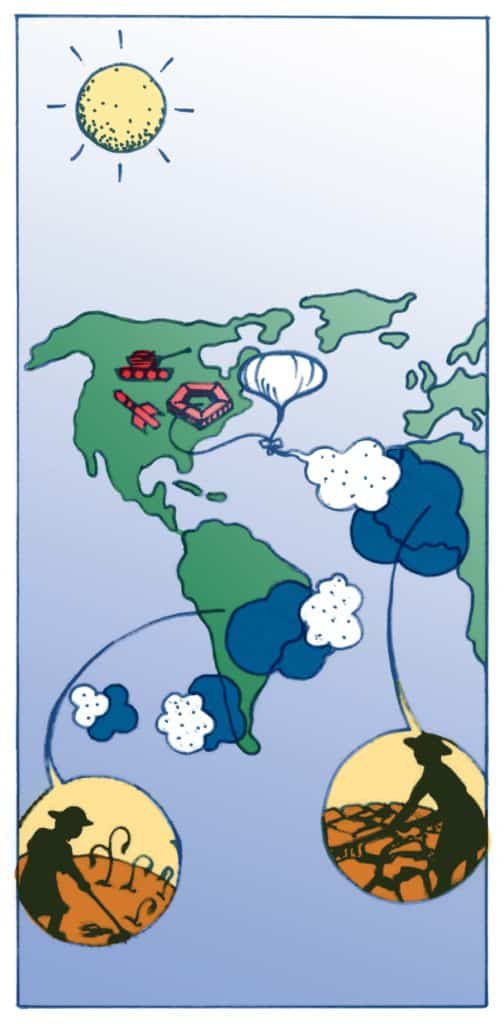
Blocking sunlight on a scale on a scale big enough to modify global temperatures would have massive effects on weather patterns, which could lead to weaponization of geoengineering. Computer models suggest that Solar Radiation Management methods like cloud brightening could lead to drought in the Sahel region of Africa or South America. In the likely scenario that SRM creates winners and losers in terms of rainfall or other weather factors, the techniques would inevitably become a tool of geopolitics.
The area surrounding Moss Landing is also a major strawberry growing region, a form of agriculture that depends heavily on rainfall, and has been experiencing prolonged drought. If precipitation is altered by cloud brightening, this could negatively affect agriculture in the region. The proponents have said that the first experiments will not directly whiten clouds (only test out the hardware) but later experiments will do so.
So far, cloud brightening has struggled to find funding due to the controversial nature of its proposals, but a successful small-scale test could help to legitimize geoengineering research and open the door to larger-scale implementations and much more funding. If the tests proceed, and lead to full implementation, the implications could become planetary in scale. These experiments are the first step on a path to unilateral implementation of geoengineering, exploitation of “alternatives” to reducing greenhouse gas emissions by fossil fuel companies, and military uses of the technology.
The California coast (and the entire Pacific coastline down to Peru) are regarded as some of the most promising locations for SRM projects. If larger tests and deployment proceed, the North and South American Pacific coastal regions are the most likely locations.
The vision of the key players remains the creation of a planetary scale technology that can change the global temperature and be flexibly operated to cool and alter different regions. As MCB proponent and researcher Stephen Salter put it in a research paper, “We could… consider the climate system as a piano in which the spray regions are the keys, some black some white, on which a wide number of pleasant (or less unpleasant) tunes could be played if a pianist knew when and how hard to strike each key.”
Project details:
The first major open-air experiment was to be overseen by a US Silicon Valley entrepreneur Kelly Wanser, who established a company, Silver Lining Inc, later renamed The Silver Lining Project, in San Francisco. Leading Geoengineering researchers David Keith and Ken Caldeira steered some funding from the Bill Gates-backed FICER fund to project leader Armand Neukerman – the inventor of the earliest inkjet printers who worked at Xerox Labs and Hewlett Packard. Neukerman’s goal has been to develop the nozzle for ships that would fire saltwater as tiny particles into the clouds, at a rate of trillions per second. The nozzle must emit particles that are small enough – 0.2 to 0.3 micrometers – to rise and remain suspended in air. In 2010, Wanser announced a large-scale experiment involving 10 ships and 10,000 square kilometres of ocean that would take place in three or four years. But after media reported on the experiment, including the involvement of Gates in funding Neukerman’s work, all traces of the project and its scientific collaborators disappeared from the Projec’s website.
A few years later, the same proposals resurfaced as the Marine Cloud Brightening Project, still with Kelly Wanser as the executive director. In media coverage, they have focused on presenting themselves not as a commercial outfit but as a folksy collection of harmless, retired engineers tinkering in their labs instead of hitting the golf range – referring to themselves as the “Silver Linings.” Thomas Ackerman, a scientist at Washington University and one of the formulators of the Nuclear Winter theory, joined the project as a principal investigator in 2014.
Under the aegis of the University of Washington, their first land-based field experiment is slated to take place at Moss Landing, Monterey Bay, California. Tom Ackerman told a geoengineering conference in 2014 that they would set up nozzles on the shoreline and spray clouds as they roll in, observing if they were whitened, while sensors on the land would assess if this led to less incoming solar radiation.
More recent press reports include the test organisers stressing that the first experiments will not whiten any actual clouds, just test the hardware. They have already conducted wind-tunnel testing of a prototype nozzle in 2015 in the California’s Bay Area. Reports have also emerged that Kelly Wanser has been scouting to hire for a public relations whiz for the Monterey experiment – perhaps with the hope of not replicating the Silver Linings Project media fiasco. They would then move experimentation to sea, for a 2-3 year phase propelling droplets from a small ship. After that, the project would move to a larger at-sea cloud whitening test initially slated for the summer of 2017, but has since been delayed. The land-based experiment has been delayed for lack of funding but is expected to move ahead in August 2018.
Sources:
digitalcommons.law.ou.edu/cgi/viewcontent.cgi?article=1022
www.washington.edu/news/2017/07/25/could-spraying-particles-into-marine-clouds-help-cool-the-planet
www.mercurynews.com/2015/07/11/cloud-brightening-experiment-tests-tool-to-slow-climate-change/
Briefing prepared by ETC Group. etc@etcgroup.org
